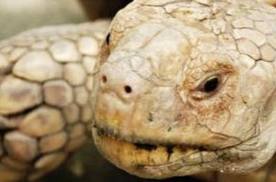导读:据国外媒体报道,利物浦大学的科学家已经探索出一种监测蛋白质的新方法,主要针对与长寿有关的蛋白。该发现有助于我们进一步了解为什么有些动物寿命更长。

研究小组检测了超过三十种哺乳动物的基因组,以识别参与长寿进程的蛋白质。他们发现了一种神奇的蛋白质,对DNA的损伤起到重要的反馈作用,并随着该物种寿命的延续而不断出现进化和变异,这表明此种进化在一定程度上改变了物种。
此外,科学家们还在蛋白质中发现了与代谢、胆固醇相关的类似模式,并参与了蛋白质的循环。调查结果显示,如果某些蛋白质在生物进化的进程中被选择,以改变相应哺乳动物的寿命,比如人类和大象,那么对于该物种而言,就有可能产生某种优化途径,修复损坏的分子。相较于生命周期更短的动物,比如老鼠,显然具有修复功能的物种寿命更长。
本项研究由英国利物浦大学综合生物学研究所的若昂佩德罗马加良斯(Joao Pedro Magalhaes)博牵头,参与人员包括了他的研究生学生李阳(Yang Li)。他们的发现第一次向世人展现了长寿动物在生物的修复系统中出现了与延长寿命有关的进化模式。在将来,科学家可以从长寿生物中识别出相应的蛋白质,开发出抗衰老的方法,使得可对机体的衰老损害做出反馈干预,比如DNA损伤时,相应的蛋白质就会立即产生反馈调节,干预机体衰老的进程。
对于蛋白质损伤退化相关联的蛋白质,可与生物的年龄相联系,也可与哺乳动物在长寿的进化问题上相联系。马加良斯(Magalhaes)博士认为:物种之间在关于遗传基础上具有不同的特点,这仍然是生物学的一个主要难题。比如,老鼠的生命要少于五年,而人类的寿命则可以持续到一百年。如果我们能确认某些生物比其他生物更长寿的蛋白质,就能运用这些发现成果研制出相关的物质,用来改善人类的健康以及延缓衰老的进程。
因此,首先探索出检测与分子进化相关的蛋白质方法是揭开物种长寿奥秘的一个途径,研究人员在特定模式中检测到蛋白质的改变,暗示了这样的变化并不是一种偶然的现象,结果表明长寿的动物能对机体进行优化,修复损伤的部分,这些举措将有助于它们抵御衰老的过程。本项研究发表在美国老化医学学会期刊《衰老》上。

Accelerated protein evolution analysis reveals genes and pathways associated with the evolution of mammalian longevity
Yang Li and João Pedro de Magalhães
The genetic basis of the large species differences in longevity and aging remains a mystery. Thanks to recent large-scalegenome sequencing efforts, the genomes of multiple species have been sequenced and can be used for cross-species comparisonsto study species divergence in longevity. By analyzing proteins under accelerated evolution in several mammalian lineageswhere maximum lifespan increased, we identified genes and processes that are candidate targets of selection when longevityevolves. We identified several proteins with longevity-specific selection patterns, including COL3A1 that has previously beenrelated to aging and proteins related to DNA damage repair and response such as DDB1 and CAPNS1. Moreover, we found that processessuch as lipid metabolism and cholesterol catabolism show such patterns of selection and suggest a link between the evolutionof lipid metabolism, cholesterol catabolism, and the evolution of longevity. Lastly, we found evidence that the proteasomeubiquitinsystem is under selection specific to lineages where longevity increased and suggest that its selection had a role in theevolution of longevity. These results provide evidence that natural selection acts on species when longevity evolves, giveinsights into adaptive genetic changes associated with the evolution of longevity in mammals, and provide evidence that atleast some repair systems are selected for when longevity increases.








